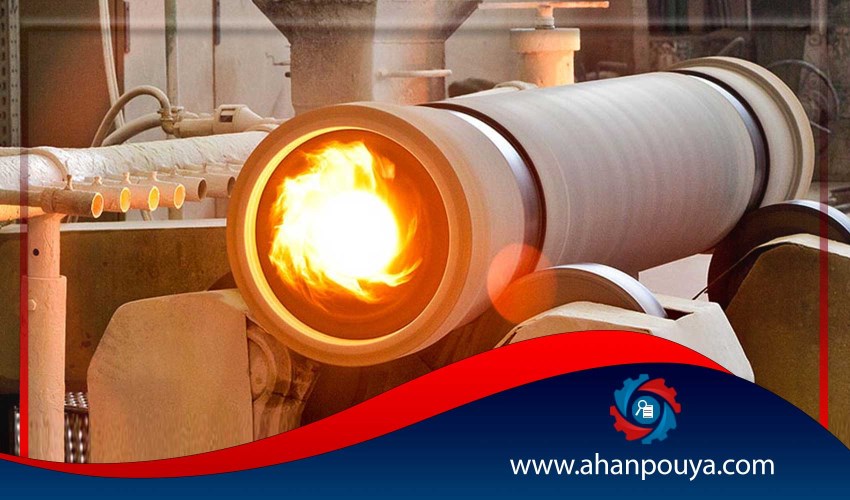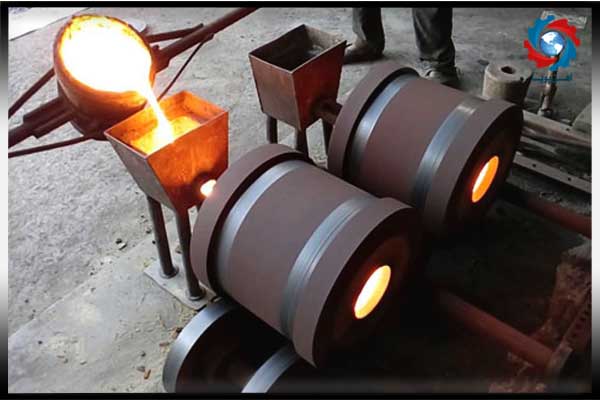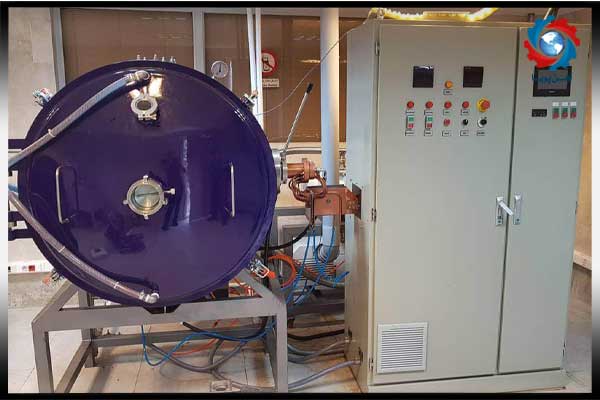
In the casting industry, there are several methods for producing high-quality metal parts with precise geometry and superior strength. One of the most advanced and practical techniques in this field is Centrifugal Casting. This method utilizes centrifugal force generated by the rotation of the mold to produce defect-free metal parts with uniform structure and high mechanical strength.
In this article by Pooya Export, we will provide a comprehensive overview of centrifugal casting, its types, advantages, disadvantages, industrial applications—especially in the steel industry—and key considerations in its implementation.

Centrifugal casting is a process in which molten metal is poured into a rotating mold rather than a stationary one. During rotation, the centrifugal force pushes the molten metal against the mold walls, forming a uniform layer. This significantly reduces or eliminates internal porosity, improves grain structure, and enhances the mechanical properties of the final product.
Depending on the mold's orientation and movement, centrifugal casting is divided into three main categories:
In this method, the mold rotates horizontally while the molten metal is introduced from one end. It is ideal for producing pipes, bushings, and large ring-shaped components.
Here, the mold is positioned vertically, and molten metal is poured from the top. The centrifugal force distributes the metal along the mold walls. This method is commonly used for smaller components such as gears and bearings.
In this variant, the mold rotates, but the molten metal is directed only to specific sections where centrifugal force helps with distribution. It is mainly used to manufacture symmetrical parts like flywheels.

Molds are typically made of heat-resistant steel or other durable materials and may be coated with refractory linings to extend their lifespan. Accurate dimensions and proper coatings are crucial for achieving high-quality results.
To avoid thermal shock and ensure smooth metal flow, molds are preheated to a specific temperature before casting.
The mold is rotated using a centrifugal casting machine. The rotational speed must be carefully adjusted so that the centrifugal force distributes the metal evenly around the mold.
Molten metal is introduced into the spinning mold through a controlled feeding system. Centrifugal force pushes the metal against the mold wall, forming the desired shape.
Once the metal solidifies, the mold is stopped and the cast part is removed. Post-processing such as machining or heat treatment may be applied as needed.
Reduced Porosity: This method minimizes gas bubbles and internal impurities in the final product.
Uniform Structure: The centrifugal force distributes the metal evenly, improving grain structure.
High Strength: Due to dense packing, parts exhibit superior physical and mechanical strength.
Suitable for Special Alloys:Alloys like stainless steel, nickel, chromium, and bronze can be efficiently cast using this process.
Lower Machining Costs: Dimensional precision reduces the need for extensive finishing operations.
High Initial Cost: The equipment required for centrifugal casting is expensive.
Need for Expertise: Precise control over rotational speed, temperature, and alloy composition requires skilled operators.
Shape Limitations: This method is best suited for symmetrical and hollow parts.
Seamless steel pipes used in oil, gas, petrochemical, and power plants are often produced using centrifugal casting. These pipes are highly resistant to pressure, heat, and corrosion.
For wear-resistant bushings and high-pressure cylinders, structural uniformity and mechanical strength are essential—qualities well-delivered by centrifugal casting.
Rings used in bearings, moving machinery parts, and large gears are often made via centrifugal casting.
Austenitic steels, stainless steels, and superalloys that require dense, consistent structures can be effectively cast using this technique.
Precisely select mold rotation speed based on the type of metal.
Control mold temperature to prevent premature solidification.
Use lubricants and refractory coatings to extend mold life.
Design a proper feeding system to avoid turbulence.
Implement quality control systems to ensure strength and uniformity.
Centrifugal casting is a cutting-edge technology in the metal casting industry, playing a vital role in producing high-quality, structurally sound parts. Despite its higher initial cost, the numerous technical benefits make it a favored method in steel manufacturing, petrochemical sectors, automotive industries, and applications requiring high-resistance components.

Ahan Pouya with more than a decade of best-selling experience, adheres to professional and ethical principles in the field of selling and buying at inside and outside the borders of Iran, helping you in the steel industry.